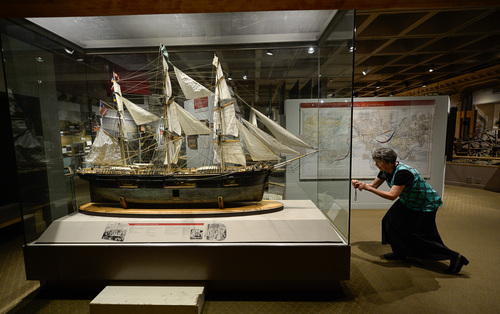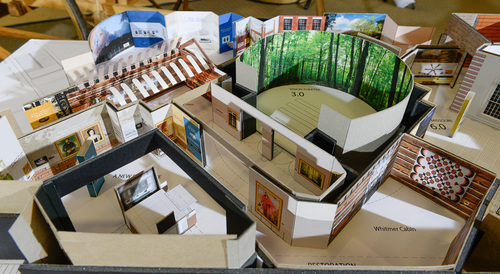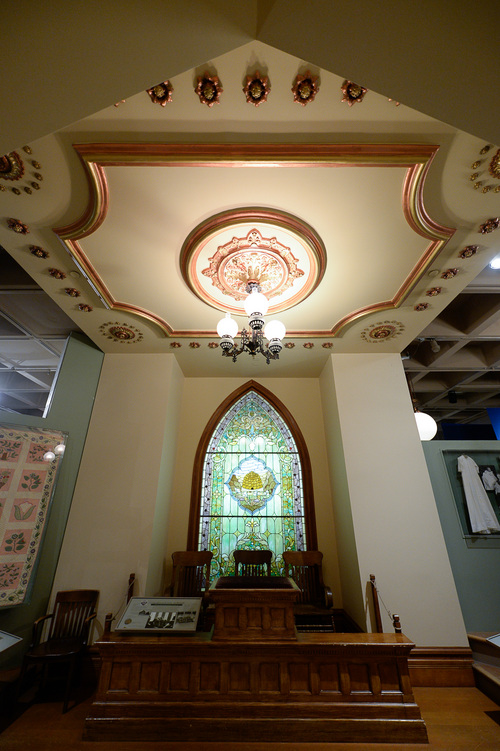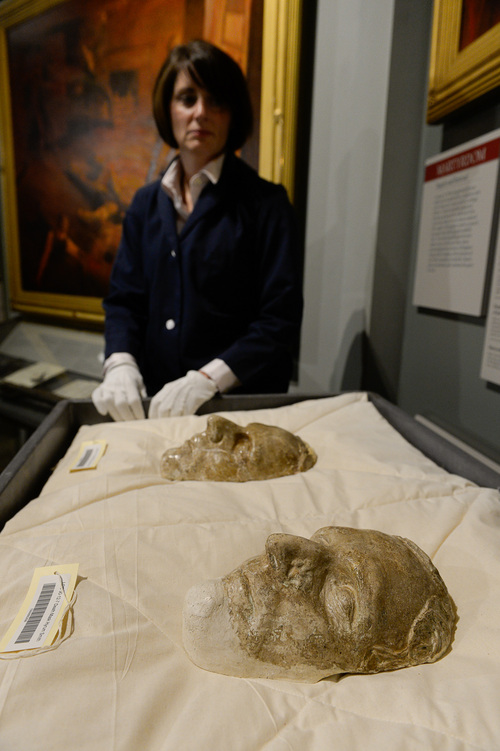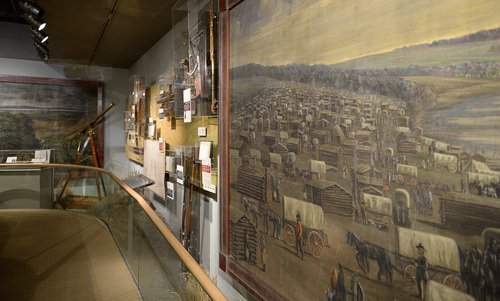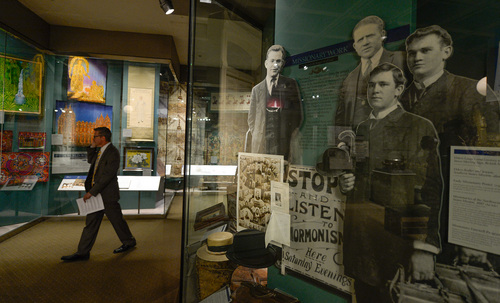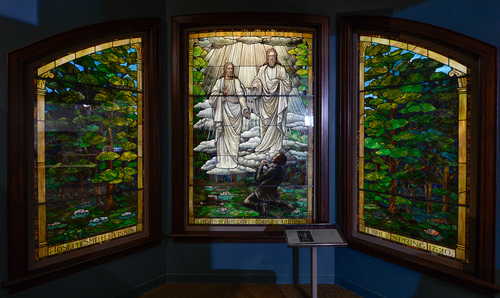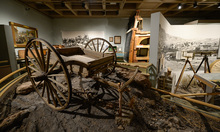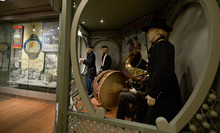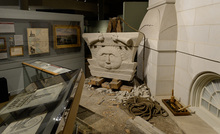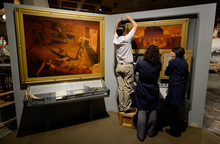This is an archived article that was published on sltrib.com in 2014, and information in the article may be outdated. It is provided only for personal research purposes and may not be reprinted.
Just as Christ is at the center of the LDS faith, so, too, do Mormon leaders want him at the center of a renovated museum.
The 30-year-old Church History Museum west of Temple Square in downtown Salt Lake City will close its doors Oct. 6 — after LDS General Conference — to undergo a yearlong makeover of its main floor.
The change is planned to give greater emphasis to Jesus Christ and the so-called first vision of the Lord by Mormon founder Joseph Smith amid more immersive exhibits — including re-creations of the New York cabin where the church was established in 1830 and Missouri's Liberty Jail, where Smith spent months incarcerated in 1838-39.
"We're confident that the renovations and new exhibits will become a very popular visit for our members and friends alike," LDS Church Historian and Recorder Steven E. Snow said Wednesday. "… While we're saddened about the closing, we're very excited for the prospects about the future."
While the current floor plan prominently features artifacts relating to the early days of The Church of Jesus Christ of Latter-day Saints and the Mormon pioneers, the revamped museum will walk visitors through early events in LDS history — with the teenage encounter Smith reported having with God the Father and Jesus Christ at the heart of the display. "It will be much clearer to people that we are a Christian church," senior curator Kurt Graham said. "Even that is something that not everybody understands who comes to visit here."
The church brought in an international firm, Gallagher & Associates, who have consulted on the Reagan Library and the Smithsonian, to help guide the renovation. When the head of the firm, Patrick Gallagher, visited Salt Lake City, Graham told him the story of Smith's first vision.
"He said, 'That is a great story.' And he wasn't talking about it from a sort of proselytizing or missionary or Mormon kind of perspective, but he was looking at it from the standpoint of, 'you can use that story to connect to your audience,' " Graham recalled. "Who hasn't doubted? Who hasn't wondered? Who hasn't prayed? Who hasn't needed help at some point of their life? And for him, Joseph represented that."
In a circular theater in the center, visitors will watch a video of that event. A path will weave into and around the theater, depicting the Latter-day Saints' migration from New York to Missouri to Illinois and, eventually, the exodus to Utah. As an example of how immersive the new museum will be, a section on the Book of Mormon will allow visitors to sit at a scribe table and try writing at the pace that Smith would have been dictating the faith's signature scripture.
Ultimately, though, museum planners wanted to "center our historical story all on the gospel of Jesus Christ," exhibit manager Maryanne Andrus said.
The renovation will also spotlight a corner of church history that isn't discussed as much: polygamy, which the faith abandoned more than a century ago.
"That's a hard subject for people to talk about, and we spent a lot of time talking about how an object can transport us back into time," said Andrus, who is excited to display a handwritten copy of a section from Mormon canon's Doctrine and Covenants that discusses plural marriage. "How can it share with us the beliefs and the feelings of those people, so that we don't take our own modern perceptions, so much as we understand their perceptions."
Andrus looks forward to the exhibit sharing both women's and men's stories as they tried to live that "very difficult principle." Museum planners made a concerted effort, she said, "to look at areas in the past where we have been more quiet about, and to bring those forward in a very open and sharing manner."
This undertaking comes amid a push by LDS leaders to increase transparency by tackling head-on some of the touchy topics in the church's doctrines and history. For nearly a year, the Utah-based faith has been posting essays on its website about plural marriage, Smith's first vision, his purported translation of the Book of Mormon and a range of other prickly questions.
In the meantime, the museum's artifacts will need to be stored and moved during the renovation — a careful, delicate process. Chief among the collection are the death masks of Smith and his brother, Hyrum, which museum director Alan Johnson characterized as their closest approximations to "a Mona Lisa," in terms of LDS popularity.
Besides the historical value of the masks — taken after the brothers were murdered in Illinois in 1844 — the relics carry spiritual significance. Mormons believe, for instance, that the eyes behind Joseph Smith's plaster mold saw Christ, Graham noted.
While most of the artifacts will be moved to several off-site locations, the masks will likely be kept inside the museum, he said.
The Utah pioneer aspects of the museum will relocate to the second floor, but not right away. Another art installation is scheduled to take that spot when the museum reopens in fall 2015, but administrators plan to give the pioneers their place in history again.
Twitter: @mikeypanda





